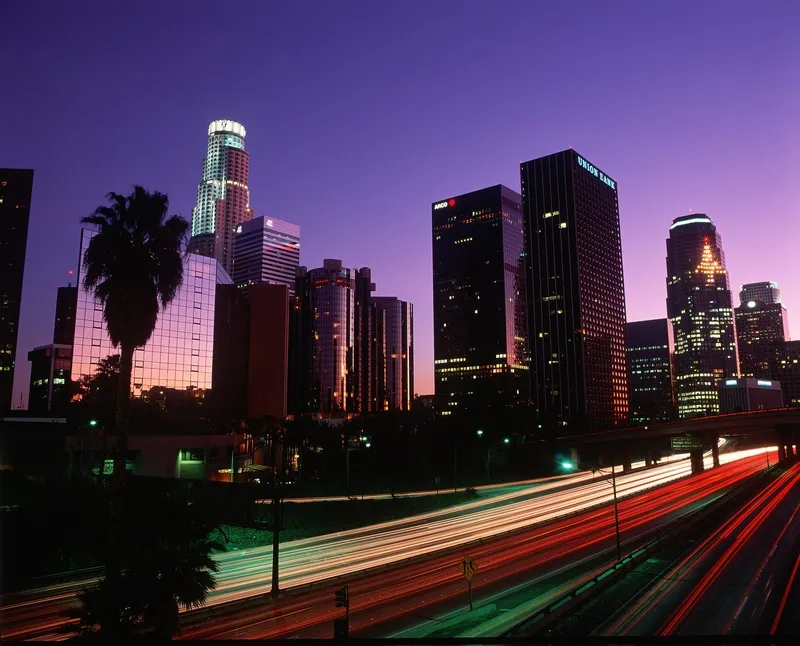Over the past year, US Transportation Secretary Anthony Foxx has visited more than 100 communities and heard one common story about crumbling infrastructure and dwindling resources to fix it with. Foxx has now sent to Congress his solution to this problem: a long-term transportation bill that provides funding growth and certainty so that state and local governments can get back in the business of building things again.
The Grow America Act reflects President Obama’s vision for a six-year, US$478 billion
March 31, 2015
Read time: 3 mins
Over the past year, US Transportation Secretary Anthony Foxx has visited more than 100 communities and heard one common story about crumbling infrastructure and dwindling resources to fix it with. Foxx has now sent to Congress his solution to this problem: a long-term transportation bill that provides funding growth and certainty so that state and local governments can get back in the business of building things again.
The Grow America Act reflects President Obama’s vision for a six-year, US$478 billion transportation reauthorisation bill that invests in modernising America’s infrastructure. As lawmakers try to fund transportation beyond 31 May, Grow America provides members of the House and Senate with the option of increasing investment in surface transportation by 45 per cent, and supporting millions of jobs repairing and modernising roads, bridges, railroads and transit systems in urban, suburban, and rural communities.
“All over the country, I hear the same account: the need to repair and expand our surface transportation system has never been greater, and yet federal transportation funding has never been in such short supply,” Secretary Foxx said. “Our proposal provides a level of funding and also funding certainty that our partners need and deserve. This is an opportunity to break away from ten years of flat funding, not to mention these past six years in which Congress has funded transportation by passing 32 short-term measures.”
A recent study by the Department, Beyond Traffic, confirmed that America’s infrastructure is failing. Drivers spend more than 40 hours annually stuck in traffic. Sixty-five percent of the roads they drive on are in less than good condition; one out of four bridges they cross needs to be replaced; and public transit faces an US$86 billion repair backlog. The report also revealed that, over the next 30 years, Americans will ask more of the country’s transportation system than ever before. The United States’ population is predicted to grow by 70 million; freight traffic to increase by 45 per cent.
But rather than doing more, funding uncertainty has forced many states to do less instead, with many states delaying projects and others shifting funding to smaller maintenance projects. As it stands, total investment in US roads, bridges, and transit systems is falling well below the level that is needed to keep them in good condition.
The Grow America Act will increase investment in all forms of transportation, which will restore the ability of states and local governments to plan for both needed repairs and efforts that increase capacity to meet future demand. Additionally, the proposal ensures that taxpayer dollars are used more effectively and efficiently, and brings federal transportation policy into the 21st century.
“It is clear to me that transportation is still a bipartisan issue, and I am really encouraged to see members of both parties working to get something done,” Foxx said. “During these next two months, though, all of us who work in Washington need to be relentless in trying to get to ‘yes’ on a bill that is truly transformative and that brings the country together. And frankly, governors and state officials as well as mayors and local officials all over the country need to continue being relentless, too, by continuing to raise their voices in support of a transportation bill that meets both their immediate and long-term needs.”
The Grow America Act reflects President Obama’s vision for a six-year, US$478 billion transportation reauthorisation bill that invests in modernising America’s infrastructure. As lawmakers try to fund transportation beyond 31 May, Grow America provides members of the House and Senate with the option of increasing investment in surface transportation by 45 per cent, and supporting millions of jobs repairing and modernising roads, bridges, railroads and transit systems in urban, suburban, and rural communities.
“All over the country, I hear the same account: the need to repair and expand our surface transportation system has never been greater, and yet federal transportation funding has never been in such short supply,” Secretary Foxx said. “Our proposal provides a level of funding and also funding certainty that our partners need and deserve. This is an opportunity to break away from ten years of flat funding, not to mention these past six years in which Congress has funded transportation by passing 32 short-term measures.”
A recent study by the Department, Beyond Traffic, confirmed that America’s infrastructure is failing. Drivers spend more than 40 hours annually stuck in traffic. Sixty-five percent of the roads they drive on are in less than good condition; one out of four bridges they cross needs to be replaced; and public transit faces an US$86 billion repair backlog. The report also revealed that, over the next 30 years, Americans will ask more of the country’s transportation system than ever before. The United States’ population is predicted to grow by 70 million; freight traffic to increase by 45 per cent.
But rather than doing more, funding uncertainty has forced many states to do less instead, with many states delaying projects and others shifting funding to smaller maintenance projects. As it stands, total investment in US roads, bridges, and transit systems is falling well below the level that is needed to keep them in good condition.
The Grow America Act will increase investment in all forms of transportation, which will restore the ability of states and local governments to plan for both needed repairs and efforts that increase capacity to meet future demand. Additionally, the proposal ensures that taxpayer dollars are used more effectively and efficiently, and brings federal transportation policy into the 21st century.
“It is clear to me that transportation is still a bipartisan issue, and I am really encouraged to see members of both parties working to get something done,” Foxx said. “During these next two months, though, all of us who work in Washington need to be relentless in trying to get to ‘yes’ on a bill that is truly transformative and that brings the country together. And frankly, governors and state officials as well as mayors and local officials all over the country need to continue being relentless, too, by continuing to raise their voices in support of a transportation bill that meets both their immediate and long-term needs.”










